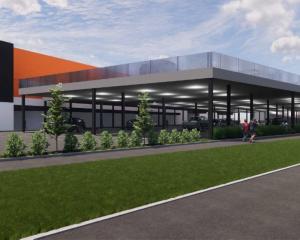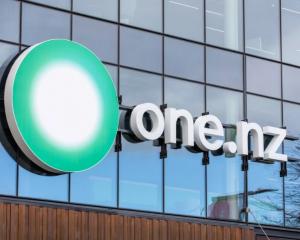Another new name was added to Port Otago's berthage records with the arrival of Cap Beatrice last week.
It is another of the Hyundai Mipo, 28,616gt, 2824TEU series and the fourth of this type that have called here on charter to Hamburg-Sud.
Like its three sister ships Cap Beatrice is employed on Hamburg-Sud's Europe-Australia-New Zealand-east coast North America-Europe service.
The Liberian flagship whose build name was Annina Schulte was delivered on January 15, 2007 to Thomas Schulte Shipping of Hamburg.
The Cap naming system was first introduced to the Hamburg-Sud fleet by the 5648gt steamer Cap Frio in 1900.
It was then exclusively reserved to naming passenger vessels employed in the South American trade.
Over the next 27 years eleven passenger liners using this nomenclature were built.
They ran alongside other passenger ships of the fleet that carried Monte, Rio and Santa names.
The largest and last passenger liner built for the company was the 27,651gt Cap Arcona.
When new it was also the largest employed in the South American trade at that time.
Built at Hamburg by Blohn and Voss, the 3-funnelled, 20-knot, turbine steamer was designed to carry a crew of 630 and 1315 passengers in three classes.
The ship commenced its maiden voyage from Hamburg to River Plate ports on November 19, 1927.
The ship was requisitioned by the German Navy during the war, firstly for service as an accommodation ship at Gotenhafen (Gdynia).
But on May 3, 1945, a few days before the cessation of hostilities, and while lying in Lubeck Bay, it came to a tragic end.
More than 5000 lives were lost when it capsized after being bombed and set on fire by British aircraft.
The Cap names were revived in 1955 by Cap Blanco, the first of several vessels of different designs that joined the fleet over the next 34 years.
These comprised owned and chartered vessels, 19 of which called here from 1961 to 1974.
Today, the Cap names are linked to container ship operations.
The largest Caps in the fleet are six 40,085gt, 3739TEU, vessels delivered in 2001-2002 from the Samsung yard Koje. With the exception of Cap San Raphael, the others, Cap San Antonio, Cap San Augustin, Cap San Lorenzo, Cap San Marco and Cap San Nicolas, perpetuate the names of six fully refrigerated, 20-knot ships built in 1961-1962 for the South American trade.
Because of their graceful appearance they became known as the "White Swans of the South Atlantic".
One of the class, the 9993gt Cap San Marco, loaded frozen meat at Dunedin in July 1969.
While five of the class went for scrap in the 1980s, one still remains afloat today.
It is the 9998 gt Cap San Diego.
The last of the class to enter service, it was delivered by Deutsche Werft A.
G., Hamburg on March 27 1962.
Sold out of the fleet in 1981 it carried the names San Diego and Sangria before being sold to Chinese shipbreakers in 1986.
But then the Senate of the City of Hamburg stepped in and bought the ship for use as a museum at Hamburg.
It arrived back there on October 31, 1986, and reverted to its original colours and name.
The ship now serves as a floating museum, hotel, and venue for weddings and receptions.
It is also available for charter trips on the river Elbe and this month took part in the parade of ships on the river.
The ship pays for itself through entry fees, etc, and is manned by volunteers, mostly former seafarers over the age of 60.
Cap San Diego offers guided tours seven days a week and attracts more than 100,000 visitors each year.











